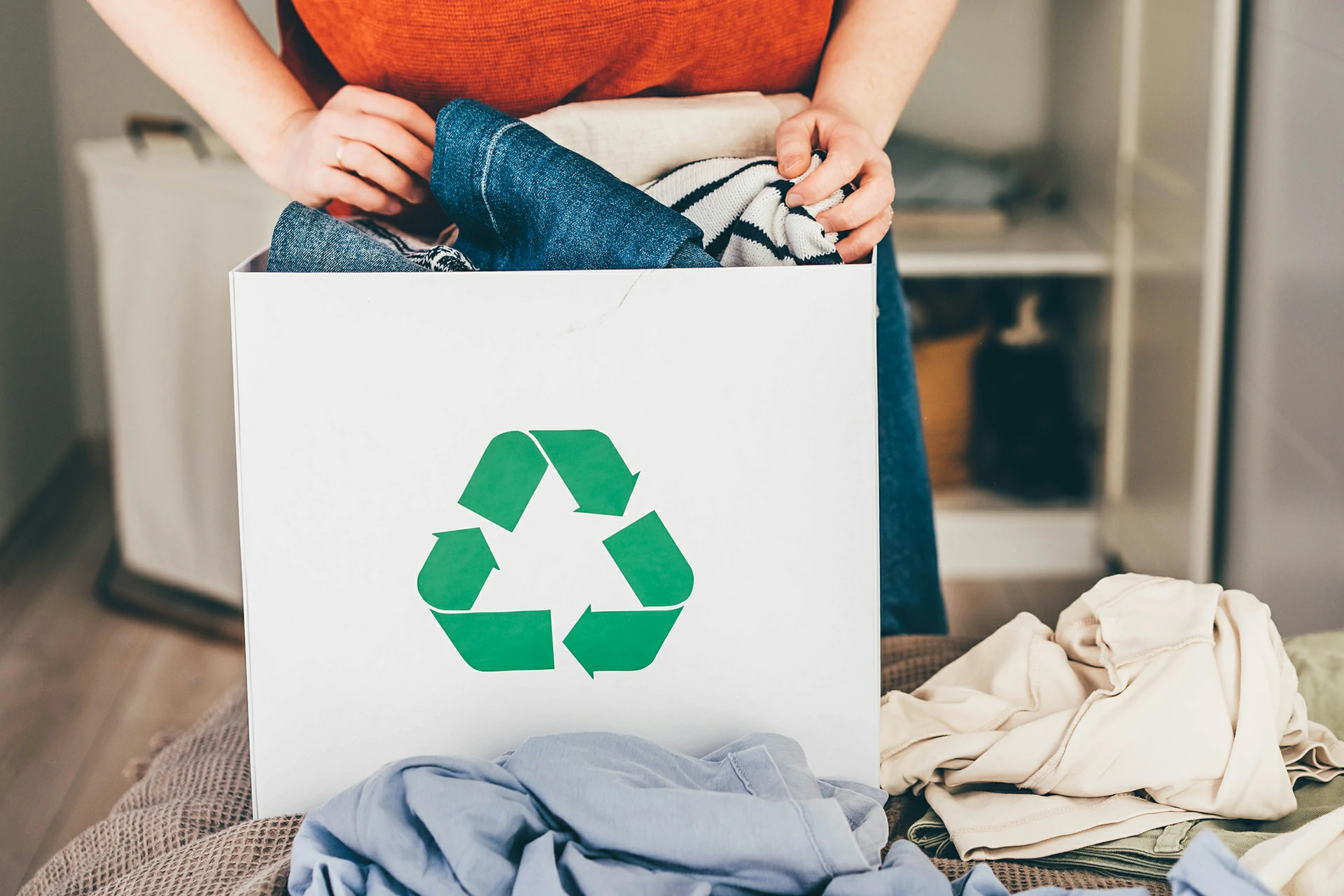
Recyclable fabric refers to textiles that can be processed and reused to create new products or materials after their original use has ended. These fabrics are designed to be part of a closed-loop recycling system, where they can be collected, sorted, and transformed into new fibers or materials without significant loss of quality. Recyclable fabrics are part of sustainable fashion initiatives aimed at reducing waste and minimizing the environmental impact of textile production. By choosing recyclable fabrics and supporting recycling programs, consumers and businesses contribute to a more circular economy in the textile industry.

Natural Fibers: Fabrics made from natural materials such as cotton, wool, silk, and linen can be recyclable. These fibers can be mechanically recycled (where they are shredded and respun into new yarn) or chemically recycled (where the fibers are broken down into their chemical components and then reprocessed into new fibers).
Synthetic Fibers: Many synthetic fibers like polyester, nylon, and acrylic are also recyclable. These materials can be chemically processed to break down the fibers into their original components, which can then be used to create new fibers without losing quality.
Blended Fabrics: Fabrics that combine natural and synthetic fibers (e.g., cotton-polyester blends) pose a challenge for recycling because separating these fibers can be difficult. However, there are advancements in technology that allow for the recycling of blended fabrics through innovative processes.

Recycling textiles is undoubtedly a sustainable practice that benefits the environment. Deekon Textile’s eco-friendly recycled fabric range, certified by the Global Recycled Standard (GRS), ensures reliable tracing of recycled sources throughout every manufacturing process. This initiative helps significantly reduce the industry’s carbon footprint and overall textile manufacturing costs.
Layne | 09-03-2024 | Views 394 times
Sweatshirt Knit Fabric Series: Functions and Composition 1. Introduction to Sweatshirt Fabric Sweatshirt fabric is one of the most basic fabrics used in circular knitting. As the name suggests, it is used for making sweatshirts. In technical terms, it is know...
Layne | 09-02-2024 | Views 366 times
Are you looking for common swimwear fabrics? 1. Common Swimwear Fabrics In the blazing summer, it’s the season for swimwear to shine. So, what are the most commonly used fabrics for swimwear, and how should you select and care for them? 1.1 Lycra (DuPont L...
Layne | 09-01-2024 | Views 394 times
The Versatility of Polyester Stretch Fabric 1. Introduction Polyester stretch fabric is a standout in the textile industry, known for its flexibility, durability, and comfort. This fabric, made from a blend of polyester and elastane (or spandex), is widely us...
Layne | 08-31-2024 | Views 400 times
Nylon Stretch Fabric: The Perfect Blend of Strength and Flexibility 1. What is Nylon Stretch Fabric? Nylon stretch fabric is created by blending nylon fibers with elastane or spandex. Nylon itself is a synthetic fiber known for its toughness, resistance to we...
Layne | 08-22-2024 | Views 433 times
RPET Non-Woven Fabric: A Perfect Blend of Eco-Friendliness and Practicality 1. Background As environmental awareness increases, RPET non-woven fabric is becoming a popular choice in the market. RPET (Recycled Polyethylene Terephthalate) non-woven fabric not o...
Layne | 08-21-2024 | Views 506 times
Introduction to 10 Fabric Finishing Processes 1. Purpose of Fabric Finishing Finishing is a technical treatment that imparts color effects, shape effects (such as smoothness, velvety texture, stiffness, etc.), and practical effects (such as water resistance, ...
Contact us now for a free consult!